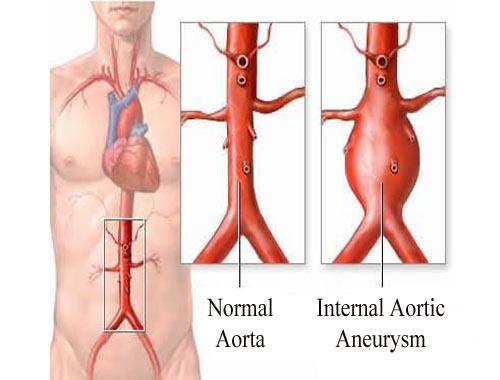Aneurysm, Aortic Aneurysm (Vascular Disease)
An aneurysm is an abnormal bulge in the wall of a blood vessel. They can form in any blood vessel, but they occur most commonly in the aorta (aortic aneurysm) which is the main blood vessel leaving the heart. The two types of aortic aneurysm are: Thoracic aortic aneurysm (part of aorta in the chest); Abdominal aortic aneurysm; Small aneurysms generally pose no threat. However, one is at increased risk for: Atherosclerotic plaque (fat and calcium deposits) formation at the site of the aneurysm. A clot (thrombus) may form at the site and dislodge. Increase in the aneurysm size, causing it to press on other organs, causing pain. Aneurysm rupture because the artery wall thins at this spot, it is fragile and may burst under stress. A sudden rupture of an aortic aneurysm may be life threatening. Aortic aneurysms may be caused by: Atherosclerosis, or hardening of the arteries, which weakens arterial walls Hypertension (high blood pressure); Local injury to the artery; Congenital abnormality. A number of conditions, such as Marfan syndrome or bicuspid aortic valves are present at birth and can cause weakness of the artery walls. If you have a family history of aortic aneurysm, Marfan syndrome or other connective tissue disease, or bicuspid aortic valve, your doctor may recommend regular ultrasound exams to screen for aortic aneurysm.
